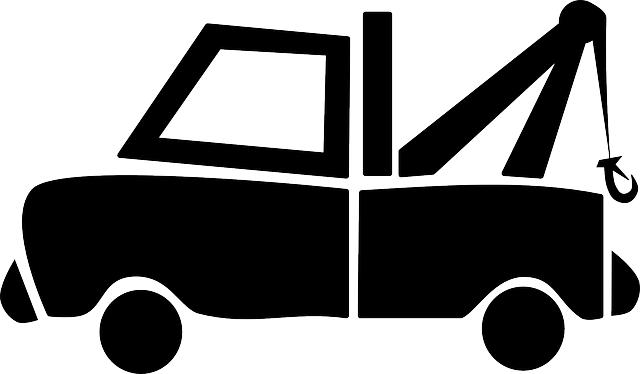Towing a car over long distances can feel daunting, but with the right knowledge and preparation, it can be a seamless experience. Whether you’re relocating, assisting a friend in need, or transporting a classic car to a new destination, understanding the various methods and equipment available is essential. This article will guide you through the different ways you can tow a vehicle with a truck, highlighting the best practices and considerations to keep in mind. From selecting the right towing apparatus to ensuring safety on the road, we will equip you with the information needed to tackle your towing challenge with confidence. Join us as we explore the ins and outs of long-distance towing, ensuring that your journey is as smooth as possible for both you and the vehicle in tow.
Understanding the Basics of Towing a Car with a Truck
When it comes to towing a car with a truck, understanding the basics is essential for a safe and efficient journey, especially over long distances. Choosing the right method for towing can greatly impact your experience. There are several options available, such as:
- Flat towing: This involves towing the vehicle with all four wheels on the ground, suitable for certain manual transmission vehicles.
- Tow dolly: A tow dolly allows you to lift the front wheels of the towed vehicle off the ground, which can be beneficial for automatic transmissions.
- Tow bars: These connect the towing truck to the towed vehicle, providing stability and ease of maneuverability.
No matter the method chosen, it’s vital to check the vehicle’s compatibility and the weight limitations of your truck. Preparation is key—ensure that both vehicles are properly connected and that safety lights and brakes are functional. Additionally, understanding your truck’s towing capacity will help prevent strain on the vehicle and ensure a smoother ride. Towing can be straightforward when you’re equipped with the right knowledge and tools, paving the way for a hassle-free experience.
Choosing the Right Equipment for Safe and Efficient Towing
When embarking on a long-distance towing journey, selecting the right equipment is crucial for ensuring safety and efficiency. A reliable towing setup begins with understanding the specifications of both your truck and the car you plan to tow. Consider the following essential components for a successful towing experience:
- Hitch System: Choose a hitch that matches the weight capacity of your truck and is compatible with the trailer.
- Ball Mount: Ensure the ball mount is appropriate for the height of your trailer to maintain stability.
- Brake Controller: Installing a brake controller is vital for managing the brakes of the towed vehicle, especially on descents.
- Mirrors: Extendable towing mirrors enhance visibility, allowing you to monitor traffic around the trailer.
In addition to standard equipment, investing in towing accessories can further bolster safety and performance. Properly secured loads are essential; therefore, using quality tie-down straps or chains to keep the vehicle firmly in place can prevent swaying or shifting. It’s also recommended to equip the truck with a transmission cooler, especially for long hauls, to prevent overheating. For peace of mind, regular checks of the towing setup, including lights and brakes, are necessary to ensure all components are functioning correctly before each trip.
Preparing Your Truck: Essential Maintenance Before the Journey
Before embarking on a long-distance journey with your truck, it’s crucial to ensure it’s in optimal condition. Start with a thorough inspection of critical components, which includes checking the engine oil, coolant levels, and brake fluid. Ensuring that the tires are properly inflated and have adequate tread depth is essential for safety and performance. Examine the battery for any signs of corrosion and ensure that connections are secure. Don’t overlook the need for a functional lighting system, as visibility plays a key role in safe towing.
In addition to these basics, conduct a comprehensive check of the towing equipment you plan to use. Ensure that the hitch is compatible with both the truck and the car being towed. Verify that safety chains are attached correctly and are in good condition. It’s also wise to test the trailer brakes and ensure they are responsive. Completing this pre-journey maintenance not only safeguards your investment but also enhances your peace of mind, allowing for a smoother and more enjoyable towing experience.
Selecting the Best Towable Vehicle for Long-Distance Travel
When embarking on long-distance travel, choosing the right towable vehicle is crucial for ensuring a smooth and enjoyable journey. Consider your towing capacity first; refer to the vehicle’s manual or manufacturer’s specifications to understand the maximum weight it can safely tow. This includes not just the weight of the car you intend to tow but also any additional cargo inside the truck. Review your options: lightweight travel trailers can also be pulled by standard vehicles, making them versatile choices for families or solo travelers who prioritize fuel efficiency without sacrificing comfort.
Next, focus on the features that enhance usability during long trips. A vehicle with a strong and stable towing setup, such as a weight-distributing hitch, can greatly improve handling and safety. Look for integrated towing technology, which may include features like trailer sway control and rearview cameras, aiding in easier navigation while towing. If comfort is a priority during stops, consider vehicles with ample interior space and entertainment options to keep passengers engaged and relaxed throughout the journey.
Mastering the Art of Towing: Techniques for Smooth Operation
When it comes to towing a car with a truck over long distances, preparation is key to ensuring a smooth experience. Firstly, check the towing capacity of both your truck and the vehicle being towed. This ensures you stay within safe limits, preventing mechanical failures or accidents. Additionally, invest in high-quality towing equipment, such as a sturdy hitch and appropriate towing straps or chains. Proper hitch connections and secure fastening of the vehicle will enhance stability during transit, reducing the likelihood of swaying or detaching on the road.
Furthermore, it’s crucial to maintain a consistent speed while driving, as abrupt changes can disturb the balance of the trailer and the vehicle being towed. Consider regularly checking your mirrors and adjusting for the increased length, especially when changing lanes or navigating tight turns. Lastly, be mindful of your braking distance, as towing adds weight and can significantly extend stopping times. These techniques can help you navigate safely and efficiently, enabling a manageable towing experience, no matter the length of your journey.
Navigating Legal Requirements and Safety Regulations
When planning to tow a vehicle over a long distance, it’s essential to familiarize yourself with the various legal requirements and safety regulations that govern towing operations. Each state may have specific laws regarding tow vehicle configurations, weight limits, and towing equipment such as hitches and safety chains. Before setting out, ensure that your towing setup complies with local regulations by checking for necessary permits and any specific state guidelines. This will not only keep you within legal boundaries but also enhance the safety of your towing journey.
In addition to legal compliance, understanding safety regulations is critical to ensure a smooth towing experience. Implementing precautions such as:
- Proper Weight Distribution: Ensure that the towed vehicle is securely attached and that the weight is evenly distributed to prevent swaying.
- Use of Safety Chains: Always use safety chains to provide an additional layer of security during transport.
- Towing Speed Limits: Adhere to reduced speed limits commonly recommended for towing; this helps maintain control and avoid accidents.
By being proactive about legal requirements and adhering to safety regulations, you make the towing process safer for yourself, other drivers, and the vehicle being towed.
Planning Your Route: Important Considerations for Long Distance
When you embark on the journey of towing a vehicle over long distances, meticulous route planning can significantly enhance the experience. It’s essential to account for various factors that could impact your travel. Consider the following:
- Road Conditions: Verify the status of the roads along your route, including any construction zones or detours that could add unexpected delays.
- Fuel Stops: Plan where you will refuel both the tow vehicle and your towed car to avoid running out of fuel on less-traveled roads.
- Weight Limits: Be mindful of weight restrictions on bridges and certain roadways to ensure a smooth journey.
- Weather Conditions: Check the weather forecast to anticipate adverse conditions that may require adjustments to your route.
Additionally, having access to reliable maps or a GPS will help navigate any changes in your planned route. Keeping communication lines open with everyone involved will also provide peace of mind. Take note of:
- Rest Areas: Identify rest stops or safe places to take breaks during the journey.
- Emergency Services: Keep a list of nearby service stations in case of emergencies.
- Travel Time: Allocate ample time for the trip, factoring in possible delays and fatigue.
Managing Vehicle Weight and Load Distribution
When embarking on a long-distance towing journey, understanding and managing the weight of your vehicle and the load it carries is paramount. Curb weight, which is the weight of your truck without any cargo or passengers, provides a starting point for determining how much additional weight you can legally and safely tow. To find your payload capacity, simply subtract the curb weight from the gross vehicle weight rating (GVWR), which is the maximum weight your truck is designed to carry, including the weight of the vehicle itself, passengers, cargo, and the trailer. This calculation ensures that you remain within legal limits and maintain vehicle performance.
In addition to weight considerations, proper load distribution is crucial for safe towing. An unbalanced load can lead to swaying, reduced control, and increased wear on your vehicle components. To optimize weight distribution, follow these guidelines: place heavier items closer to the front of the trailer, secure everything properly, and ensure that your hitch is rated for the combined weight of your trailer and load. This balanced approach not only enhances stability on the highway but also improves fuel efficiency, making your long-distance towing experience smoother and safer.
Communicating Effectively: Hand Signals and Safety Tips
When towing a car over long distances, clear communication between the driver and the person assisting is crucial for safety. Using hand signals can convey intentions without relying on verbal cues, especially in noisy environments or when maintaining distance. Some essential hand signals include:
- Arm Extended and Upward: Indicates a right turn.
- Arm Extended and Downward: Signifies a stop or slow down.
- Arm Extended and Horizontal: Denotes a left turn.
Incorporating these signals during your journey ensures that both drivers are on the same page. It is also advisable to establish a set of safety tips before hitting the road. These may include keeping a safe distance between vehicles, frequently checking mirrors, and ensuring the towing equipment is securely fastened. It may even be prudent to communicate emergency procedures should any unforeseen issues arise while on the road.
Handling Emergency Situations: What to Do When Things Go Wrong
When you find yourself in an unexpected situation while towing a car over a long distance, the first step is to remain calm and assess the problem. Check your vehicle, the towing equipment, and the towed car to identify any immediate issues. Ensure your lights and signals are functioning to alert other drivers of your presence. Additionally, inspect the towing connection; any loose straps or chains can be a recipe for disaster on the road. If something feels off, don’t hesitate to pull over safely to troubleshoot. It’s crucial to address any minor issues before they escalate into more significant problems.
Should you encounter a mechanical failure or an accident, your safety is paramount. Stay clear of traffic, and use reflective triangles or road flares to signal your position. Call for professional help if the situation is beyond your skill set or tools. Having a reliable towing service on speed dial can make a significant difference in response times. Moreover, ensure you have adequate emergency supplies like water, a first-aid kit, and basic tools on hand. These preparations can turn a potentially stressful experience into a manageable one and keep you and your vehicle out of harm’s way.
Post-Trip Checks: Ensuring Everything is in Good Condition
Once you’ve completed your long-distance towing journey, conducting a thorough post-trip inspection is crucial to ensure the vehicle and tow equipment are in optimal condition. Begin by examining the tires for any signs of wear or damage, as they bear the brunt of the load during transit. Check the brakes to confirm they are responsive and not showing any signs of overheating. Additionally, it’s important to inspect the hitch and safety chains for any wear and tear to prevent future mishaps.
Next, turn your attention to the vehicle’s fluid levels, ensuring that oil, coolant, and hydraulic fluids are all at appropriate levels. Inspect the engine components such as belts and hoses for cracks or leaks that could lead to breakdowns. evaluate the electrical system, including brake lights and turn signals, to ensure they are functioning properly after a long trip. This comprehensive post-trip check will provide peace of mind and help maintain the longevity of your vehicle and tow equipment.
Key Takeaways
towing a car with a truck over long distances requires careful planning, the right equipment, and adherence to safety protocols. Whether you opt for a flat towing method, a tow dolly, or other alternatives, understanding the nuances of each option can make your experience smoother and safer. Remember, preparation is key, from checking compatibility to ensuring both vehicles are roadworthy. By equipping yourself with the knowledge and tools discussed in this article, you can embark on your towing journey with confidence, knowing you’re prioritizing safety and efficiency every step of the way. Happy towing!




